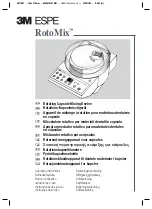
Documentation Number 485T1995 Manual
1
B&B Electronics -- PO Box 1040 -- Ottawa, IL 61350
PH (815) 433-5100 -- FAX (815) 433-5105
INTRODUCTION
The Model 485T Tester can be used to check the condition of
signals at any node on an RS-422 or RS-485 network. The tester
determines if the maximum permissible negative or positive voltages
are being exceeded. If these voltage levels are exceeded it is
possible to damage the RS-422/485 receivers and drivers. The
tester also checks to see if minimum required differential voltages
exist on the lines. The tester uses the normal data that is
transmitted on the line to check the value of the minimum differential
voltage. There is an RS-232 output that can be used to view the
network data.
RS-422 AND RS-485 STANDARDS
The RS-232 Standard (Interface Between Data Terminal
Equipment and Data Circuit-Terminating Equipment Employing
Serial Binary Data Interchange) was developed many years ago by
the Electronic Industries Association (EIA). It was used to connect
modems to terminals for dial-up computer systems. Since the
modem and terminal were usually located close to each other, wire
length was not much of a factor in the standard. RS-232 maximum
wire lengths were set at 50 feet. RS-232 lines can run farther with
special (low capacitance) wire but there is a practical limit of 300 or
so feet.
The EIA then developed two newer standards to allow serial
data communications to go past the 50 foot barrier. The first is RS-
422, Electrical Characteristics of Balanced Voltage Digital Interface
Circuits. The second is RS-485, Standard for Electrical
Characteristics of Generators and Receivers for use in Balanced
Digital Multipoint Systems. Using these standards, wire lengths of
about 4000 feet are attainable. This is possible by using two wires
for each signal instead of the one wire used in RS-232.
A typical RS-232 system can have eight wires, seven signals
and one ground, not all of which are used in every system. As each
signal goes high or low (typ12 and -12 volts) it uses the one
ground wire as a reference. Ground currents can cause confusion.
Also, the RS-232 drivers are not capable of driving much more than
2500 picofarads before the signal on the line is badly distorted.
Both RS-422 and RS-485 use two wires for each signal. These
two wires are driven differentially. When one wire is low the other is
































